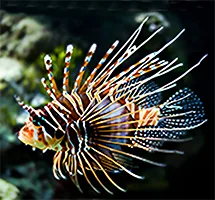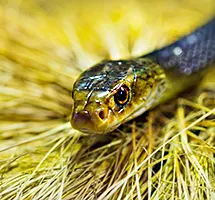Deadly Australian Animals
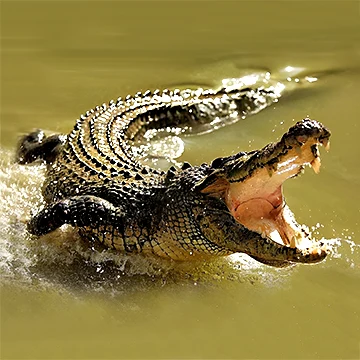
List of Australian Deadly Animals
Australian animals are among the most dangerous and deadly creatures in the world. The shark and saltwater crocodile can bite a human in half. The box jellyfish is the most venomous animal on Earth and can kill you in minutes. The powerful kick from a cassowary bird can slit a person open. Australia is also home to many dangerous snakes, spiders, fish, and even snails that can kill you. Despite their dangers, these animals are typically not aggressive towards humans unless provoked.
Australian Deadly Animals List
Box Jellyfish
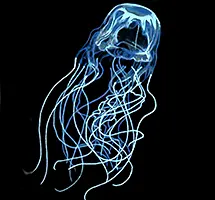
The box jellyfish is the most venomous animal in the world. Its sting can kill a human in minutes. It is a pale blue, basketball-sized jellyfish that trails numerous long tentacles that fire tiny darts containing deadly toxins that cause paralysis, cardiac arrest, and death.
Read More About Box JellyfishRedback Spider
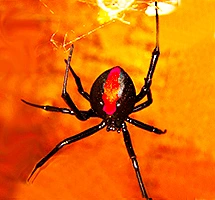
Redback Spiders are the second most deadly spider in the world. A bite from a female redback spider can kill a human. The male is tiny and harmless. They are not aggressive and avoid humans. Most bites occur when humans invade the spider's space.
Read More About Redback SpidersCrocodile
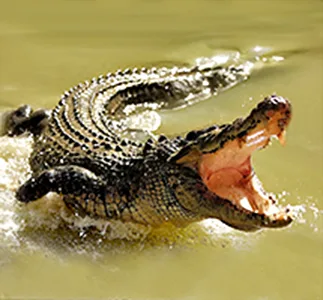
Crocodiles are ferocious, cold-blooded, amphibious, carnivorous reptiles with mouths crammed fully of large, pointed teeth. Crocodiles will eat almost anything and can grow to 6m and weigh as much as 1,000kg.
Read More About CrocodilesRed Bellied Black Snake
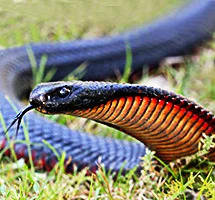
Red-bellied black snakes account for approximately 16% of all snake bites in Australia. If provoked, a redback snake will attack, delivering a quick bite and injecting venom into its victim. It may also cling to its victim and chew vigorously.
Read More About Red-belly SnakesShark
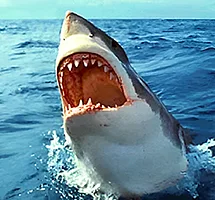
Shark attacks are wildly publicised by the media, but they are very rare. The great white, tiger shark and bull sharks are the most dangerous. There are 182 species of sharks in Australian waters. Over 97% of these sharks are harmless.
Read More About SharksEastern Brown Snake
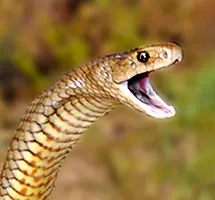
The eastern brown snake is the second most venomous snake in the world and responsible for the most snakebite fatalities in Australia. It is not naturally aggressive towards humans. Its venom is 12 times more deadly than an Indian cobra's.
Read More Eastern Brown SnakeStonefish
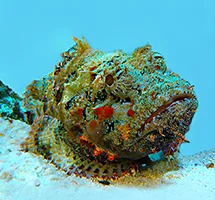
The stonefish is the most venomous fish in the world. Spines along its back inject a highly toxic venom which causes excruciating pain and can lead to heart failure and death. It camouflages itself and hides near coral and rocks.
Read More StonefishFunnel Web Spider
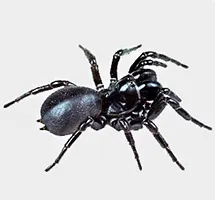
The Sydney funnel web is the deadliest spider in the world. Its venom is packed with 40 toxic proteins that can kill a human in 15 minutes. Its fangs are strong enough to penetrate fingers and even toenails.
Read More Funnel Web SpidersKangaroo
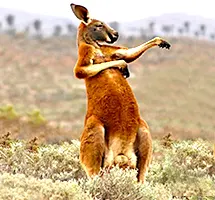
Kangaroos are strong, muscular animals with powerful kicks. If cornered or threatened, they will kick and claw their adversary, causing serious injury or even death.
Read More KangaroosCassowary
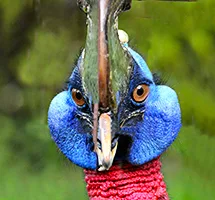
Cassowaries are the most dangerous birds in the world. These large, flightless birds with dagger-like claws and powerful legs can kill a human with a single kick.
Read More CassowariesDingo
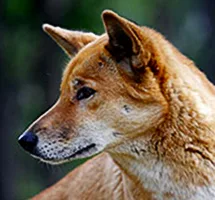
Dingoes are wild dogs of Australia. They generally avoid humans but are unpredictable and have been known to attack or bite humans.
Read More About DingoesPlatypus
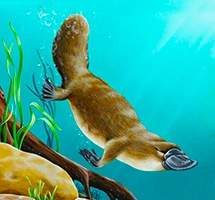
The male platypus has two sharp jabbing spurs on its rear ankles. Its venom can kill small animals such as dogs but is not fatal to humans. But the pain is excruciating and lasts for months.
Read More About PlatypusesEmu
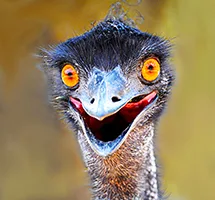
Emus are tall non-aggressive birds. However, if threatened, it will kick with its powerful legs with sharp claws. About 100 emu attacks are reported in Australia each year.
Read More About EmusWombat
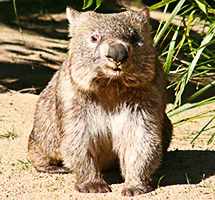
Wombats are shy, muscular marsupials that can become aggressive. They will bulldoze you down in a frontal assault, possibly knocking you over. In their burrows, they will smash an intruder against the burrow walls using their tough bottoms.
Read More About WombatsEuropean Honey Bee

Nearly 33% of all hospital admissions are for bee stings. Most only cause short term pain and swelling. Some cause anaphylactic shock and death.
Read More European BeesCane Toad
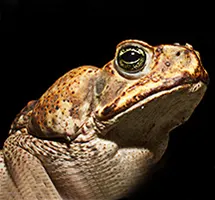
Cane toad toxin is highly poisonous. Produced in glands on its shoulders, this poison causes rapid heartbeat, convulsions, and paralysis, resulting in death.
Read More About Cane ToadsBuffalo
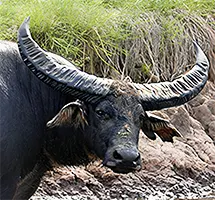
Feral water buffaloes are notoriously aggressive and not afraid to face off a human. They are large, fast and have massive horns which make them formidable.
Read More About BuffaloesCorroboree Frog
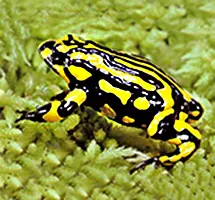
The corroboree frog is a highly poisonous amphibian with striking yellow and black longitudinal markings. There may be as few as 50 left in the wild.
Read More About Corroboree FrogsBlue-Ringed Octopus
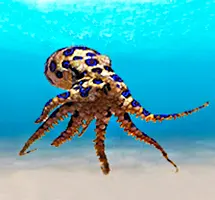
The bite from the tiny blue-ringed octopus is painless and may go unnoticed. However, its toxin is one of the most potent on earth, and there is no antidote. Death may occur in as little as 30 minutes. It lives in tidal pools and coral reefs.
Textile Cone
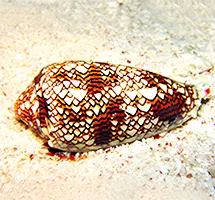
The Textile Cone's harpoon-like tooth can pierce the skin, rubber gloves and even wetsuits. Its sting is painless and often goes unnoticed. But its venom quickly causes respiratory paralysis and eventual death. Over 30 human deaths have resulted from cone snails.
Banded Coral Sea Snake
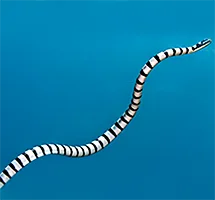
One bite from this very venomous snake can deliver ten times the venom needed to kill a human. They are excellent swimmers and divers.
European Wasp
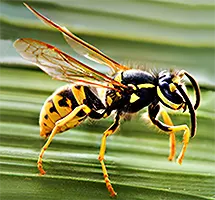
The European wasp is aggressive and will sting their victim repeatedly causes burning pain, inflammation and severe allergic reactions.
Tiger Snake
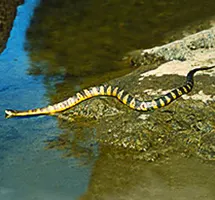
Tiger snakes are large, aggressive snakes responsible for the second-highest number of bites in Australia. Their venom is neurotoxic.
Do Australian Animals Attack Humans?
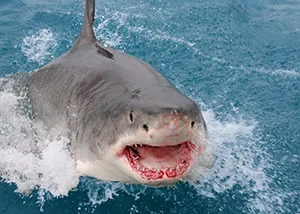
Photo: Shark Attack
Australia has some of the deadliest animals in the world. But there are no animals in Australia that deliberately attack humans. Given a choice, they all prefer avoiding humans. Except for sharks and crocodiles, none of these deadly animals would ever consume a human for a meal. Therefore, there is no advantage in them attacking something as large and tasteless as a person. Even sharks and crocodiles prefer to leave humans alone.
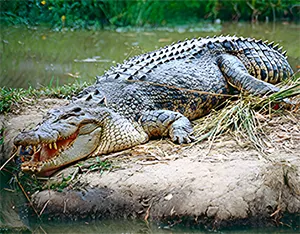
Photo: Crocodile on a riverbank
Therefore, it is reasonable to say that almost all confrontations with these animals are caused by foolhardy actions of humans. These may include such things as sticking their hands into a spider's web, swimming in waters infested with crocodiles or shakes, stepping on dangerous animals or invading an animal’s space.
Classification of Dangerous Australian Animals?
There is no standard way of classifying the level of risk posed by various types of animals. We have formulated a common-sense approach for determining the level of risk involved. Some animals may be in more than one of these groupings. For example, a bee sting is not deadly to most people; however, to some, a bee sting can bring about a severe allergic reaction which in turn can cause death.
Deadly - Those animals are likely to inflict death if untreated. The most venomous Australian snakes and spiders and the box jellyfish fall into this category.
Dangerous - Animals that can inflict significant injury on a human but don't necessarily cause death. For example, being mowed down by a wombat is really not much fun and could definitely result in broken bones and other serious injuries.
Types of Injury Inflicted by Australian Animals
We have grouped animals according to how they inflict death and injury on humans.
Venom - Typically, the most deadly animals inflict their injury by stinging or biting, and injecting toxins into their victims, which results in the victim's death.
Poison - These animals do not directly inflict injury on humans themselves. If, however, these animals are ingested or rubbed against, poisoning can occur resulting in serious injury or death.
Aggression - Animals in this group are those that inflict damage by brute force such as kicking, biting, and butting their victims.
Dangerous Australian Animals Rated
The dangerous animal rating used on this page was developed by the Australian Museum, where the museum staff rated animals on a score of 10 based on the threat they pose, combined with the likelihood of encountering one. This list was published in the Australian Geographic. We have added other animals to this list. (See the Dangerous Animals Rated Index above).
Deaths Caused by Australian Animals – Statistics
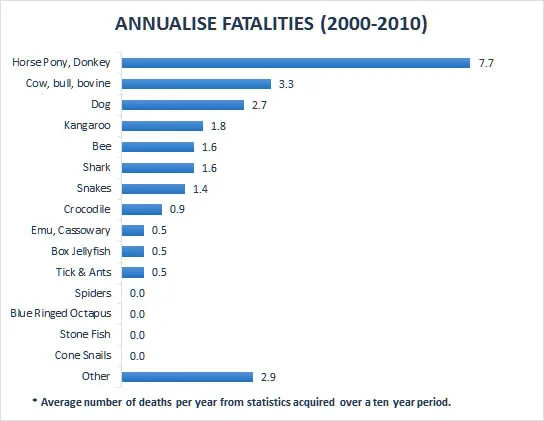
A recent NCIS Fact Sheet states that there were 254 animal related deaths throughout Australia in this ten year period. Whilst the numbers vary from year to year, this equates to roughly 26 deaths per year overall.
Deaths Caused by Domestic Animals
Domesticated, recreational, farm animals and pets accounted for 54% of all animal related fatalities. The report states that deaths involving horses were the most common and occurred most amongst people aged between 20 and 24 years. Deaths involving dogs occurred most frequently in children under the age of 4 years or elderly people. Farming accidents probably account for the bovine-related deaths.
Deaths Caused by Australian Wild Animals
Australian wild animals, both native and introduced, contributed to only 46% of all animal-related fatalities. Deaths attributed to emus, cassowaries and kangaroos occurred indirectly as a consequence of collision with motor vehicles. They did not directly cause the death of any people.
Why Do Australian Animals Cause So Few Deaths?
The good news is that the number of fatalities resulting from these deadly and dangerous animals is extremely low – it averages only 13 a year. Four times as many Australians die by falling out of bed each year (56 deaths).
So while Australia may indeed have the most deadly and dangerous animals, the death rate is surprisingly very low. The reasons for this are twofold.
Most Dangerous Animals Rarely Meet Humans
Most deadly and dangerous animals rarely come in contact with humans because they prefer avoiding humans, and also, in many instance they live away from human populations.
Excellent Medical Care
In recent years, excellent medical care and the development of antivenom means that relief can be administered to the victim before the ill effect of the inflicted injury can cause death.
Learn More About Australia's Incredibly Quirky Animals
All Rights Reserved. (Last Updated: Jun 14, 2025)
